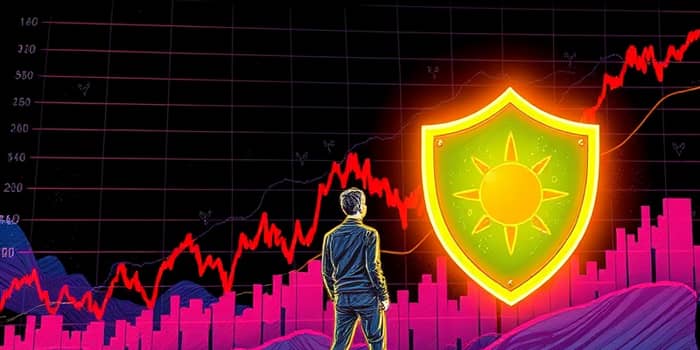
In today’s fast-moving financial markets, prices can swing dramatically within minutes. Having a clear risk management strategy is essential for any trader or investor who wants to preserve capital and maintain long-term growth.
One of the most effective tools for controlling risk is the stop-loss order. By automatically executing trades when certain price levels are reached, stop-loss orders can act as a safety net against sudden market shocks.
A stop-loss order is a fundamental risk management tool that instructs a broker to sell or buy a security once it reaches a predefined price level. The primary goal is to limit their loss or lock in profits without constant monitoring.
For long positions, the stop price is set below the current market price; for short positions, it is set above. When triggered, the order becomes a market order, ensuring execution at the next available price.
Implementing stop-loss orders involves a few straightforward steps. Once in place, they work silently in the background, guarding your positions.
While this mechanism offers peace of mind, it is important to be aware that rapid price movements can occur in highly volatile periods. Execution prices may differ from the stop price in gap scenarios.
Stop-loss orders provide a disciplined approach to trading. They help investors avoid emotional decision-making in turbulent markets and enforce a predetermined exit strategy.
Key benefits include:
However, there are risks to consider. During sharp market gaps, the execution may occur at a price significantly worse than the stop price. Additionally, brief price spikes or “whipsaws” can trigger orders prematurely.
Consider an investor who purchases 100 shares of XYZ at $50 each. To cap losses at 10%, a stop-loss order is placed at $45. If XYZ plunges to $45, the order triggers and sells at the next available price, possibly slightly lower in a fast drop.
Below is a simplified comparison of outcomes with a stop-loss order versus a stop-limit order in a sudden price drop scenario:
This table highlights the trade-off: a stop-loss order guarantees execution but may face slippage, while a stop-limit order controls price but may miss execution.
Choosing the right strategy for setting stop-loss levels depends on your trading style, risk tolerance, and market context.
By combining these approaches with position-sizing rules, investors can fine-tune their risk management for volatile market conditions worldwide.
Major market sell-offs often trigger clusters of stop-loss orders, amplifying downward pressure and accelerating price declines. This cascade effect can exacerbate losses for traders without such orders in place.
Global factors, including currency fluctuations and geopolitical events, contribute to market swings. For instance, a sudden change in the USD/JPY exchange rate may spark equity market volatility, activating numerous stop-loss orders across asset classes.
As algorithmic and high-frequency trading continues to dominate, stop-loss orders remain vital for retail and institutional investors alike. Advanced platforms now offer dynamic risk controls, integrating stop-loss logic into automated portfolios.
Looking ahead, the proliferation of real-time data analytics and AI-driven alerts will enable more precise stop-loss adjustments, reducing the risk of premature triggers and enhancing trade execution.
Understanding the evolving landscape of global economic trends, from interest rate shifts to supply chain disruptions, will be crucial for setting stop-loss orders that adapt to changing market regimes.
Stop-loss orders represent a cornerstone of prudent trading and investing. By defining clear exit points and enforcing discipline, they help safeguard portfolios against the inevitable ups and downs of the market.
Whether you are a seasoned trader or a long-term investor, incorporating well-structured stop-loss strategies can transform uncertainty into controlled risk, empowering you to pursue growth with confidence.
References













